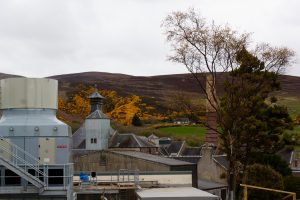Diageo, the worlds largest drinks company, has today surprised the whisky universe with the announcement that it is to re-open (or more accurately, re-build) two so-called ‘lost distilleries in Scotland [Press Release]. Whilst the move is in many ways a welcome one and they claim it “also reflects the strong growth in the single malt Scotch market”, my first reaction is to be wholly cynical about this. Having closed them both in 1983 because of ‘lack of demand’ for their product, only to find that the leftover casks, abandoned in warehouses for a decade or more, could generate a lucrative cult following, this proposal screams ‘cash’ at me.
It should be easy enough to recreate one the 2 ‘distilleries’ on (or near) the original site for a very small part of the £35M investment mentioned. They say “Cask filling and traditional warehousing will also be included on the sites of both distilleries” but I wonder if that will prove to be what most readers would expect? Is it not more likely that they would look to utilise the infrastructure (and therefore economies) of an existing plant? In the case of Brora, it was replaced in 1967 – on the same site – by a new distillery which took on the name of the old one (Clynelish) with the old buildings being revived for a few years under the name Brora. So they could get away with building – as has been done elsewhere – just a new stillhouse; think Kininvie (inside Balvenie) or Ailsa Bay (inside Girvan). They have the still designs to copy and know the ‘recipe’ so that one’s easy.
Port Ellen, I presume, is a bit more difficult as the original site has been subsumed by the Maltings which serve not only Diageo’s Islay distilleries requirements but all the other distilleries on the island. But if they have the plans to accurately recreate the stills and records of the ‘recipe’ then that’s a start. But what about the other infrastructure? Despite their apparent intent at this stage, will they ultimately decide to make the wash at Caol Ila or Lagavullin, tanker it to Port Ellen then tanker the spirit back? The product could reasonably be called New Port Ellen, couldn’t it?

There are however some anomalies here. As has been said, the cult following for both whiskies is almost entirely based on the mature spirit coming out of the casks which inadvertently were allowed to mature for 20 years plus. Before being closed, the product of both distilleries was almost exclusively used in blended whisky, so presumably, these casks were, at the time, deemed unsuitable for that purpose.
But for me, the real problem is that neither of these whiskies really has any history. The Brora that we revere is a product which was produced between 1969 and 1983, after the distillery’s original whisky style was moved to the newly built Clynelish next door. Likewise, our Port Ellen affection is for whisky produced since 1967, the distillery being completely rebuilt that year having been closed in 1930.
I’m not saying we shouldn’t hold in high regard the product of 60’s & 70’s distilleries – Braeval and Allt-a-Bhainne, for example, both produce perfectly decent whisky – but I fear too many people are seeing Port Ellen and Brora through rose-tinted spectacles, or should that be, the dregs in the bottom of their Glencairn glass?
